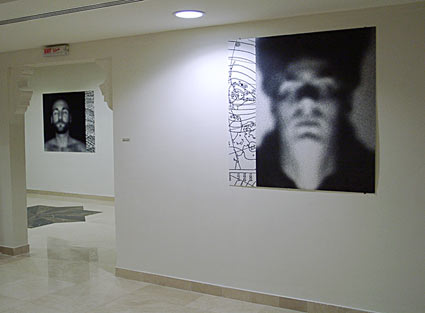
The sleepless Night, 2000
Derek Besant
The sleepless Night, 2000
Digital print
search


Derek Besant
The sleepless Night, 2000
Digital print
Besant is conscious of the seductive qualities of the back-lit, electronic activity of the computer screen. His works use that language to engage the viewer. The screen is the likeliest canvas on which to paint the ephemeral nature of our existence. It is a window into a new world of Polaris, the artist himself. They are his contemporaries - all vital adui somewhere between 20 and 60 years old. Some are clothed, some are not. Long hair, short hair, heavy, thin. Viewers coming to these works by Derek Besant may experience flickers of recognition - perhaps a face will prompt some recall of one of our own intimates - yet they appear as anonymous people, some small cross section of the human populatio~. In the modern world, we are all databanks of thousands.
In his book on the cult of contemporary cinema called "The Phantom Empire", Geoffrey O'Brien says: "Memory as the ultimate in private property, is a vestige of a vanished century:" In the new civilization, half the faces in the memory bank are of public personalities, actors playing fictional characters. The farmer ploughing his field in the Housatonic valley in 1803 had how many names in his head? Family, neighbours, people he passed on the road going to and from a market. The prosperous and powerful of nearby counties, a certain number of state and national political figures, the characters in the Bible, Washington and Jefferson and other outstanding patriots. He had heard some stories, some ballads, some episodes of history. He may have heard of some actors, some travellers, some outlaws, but if you went into the street right now and stopped anyone at random you could tap into a knowledge of hundreds, thousands of familiar strangers.